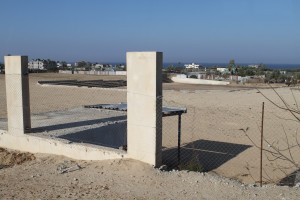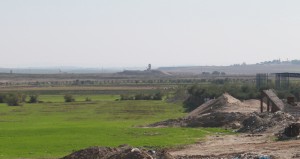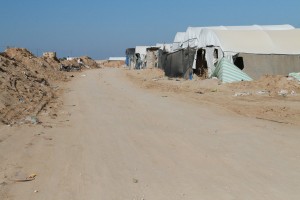Washington medical delegation travels the periphery of tiny Gaza
In keeping with the Islamic holy day, medical clinics and operating rooms are closed on Fridays. Our group took this day to travel the periphery of Gaza.
Gaza is a small land – approximately 25 miles long and 3 – 7 miles wide. All borders of Gaza are closed to free passage. To the north and east, borders are marked by Israeli-imposed no-access zones (areas whose boundaries are not clearly marked).
Each week, according to a UN spokesperson, people who farm near these areas are fired on by Israeli soldiers and wounded or killed – often well outside the understood boundaries. Vast acres of land, once used for supplying food for local use and for export have been rendered inaccessible and dangerous.
The border with Egypt is marked by a “no-man’s land”. To the sea, Gazans are prohibited by Israel from traveling into deep water. As we drove, we noted armed Israeli guard towers in the near distance and the reality of Gaza as a prison was clear.

The American International School once stood on this site. It had been attacked before by Israel, but was completely destroyed in Israel's Operation Cast Lead. (Bob Haynes photo)
Following the Flotilla disaster in May, 2010, outcries from the international community demanding that Israel end the siege on Gaza were met by a minimal increase in transferred goods.
For people, there is no free passage in or out of Gaza. Select permission is granted to a minimal number of people i.e. those with critical medical care needs may sometimes travel for care to the West Bank through the Israeli check point at Erez. Also, limited numbers of people – those having gained hard-sought permission – are allowed to transit through the Rafah check point into and out of Egypt. Both of these check points operate on limited hours and limited days.
Throughout our travels to the north and east today, the destruction of Gaza by Israeli attacks is visible. Entire areas where homes and industrial plants once stood are now empty.
Prohibition of access to rebuilding materials is evident – temporary structures of metal and plastic now house thousands of people.
We visited the area of tunnels at the southern border Gaza in Rafah. At the high point of tunnel traffic, 1,000 or more tunnels were in use. We heard that approximately 150 tunnels are active today – carrying goods at an inflated price and at great danger.
Reaching 30 meters into the sandy earth, the tunnels are fragile. On Wednesday of this week, while talking with medical students, Bob Haynes learned that earlier that day, two young men were crushed by a tunnel collapse. Over 200 people have died in the tunnels. Open commerce with Israel could end the need for tunnel traffic.Last evening, we were given a preview of what we would see today. We were invited to the home of a local scientist. Near the border with Israel, this family’s lovely home was occupied for 18 days during the 2008-2009 attacks.
Eleven family members survived in one small room of their home while soldiers commandeered the rest of the house. Tanks destroyed entry stairs, partial walls and much of the home’s yard. Areas where bullets tore through the walls of the master bedroom remain scarred. A family car, destroyed by an Israeli bulldozer, is a now a lump of metal.
Again and again, our host commented how thankful his family is to be alive and correctly forecast that today we would see that many in Gaza were not so “fortunate.”
RSS feed for comments on this post. TrackBack URI

